Chess Game Review: A Few Tactical Puzzles

Today, I played an interesting game on chess.com against user ariejon. We are both in the 1000-1100 range. I tend to play 10 minute games, since I often don't have the patience for longer games. This game, however, was 15 minutes with a 10 second increment. I definitely played a lot better in this game than in previous games because I had the time to carefully plan, and to never make snap-second moves. It payed off, and I saw a few tactical attacks that I may not have otherwise seen.
I played white. The game began with: 1. e4 d6. This is the so-called the "Pirc Defence". Sensing that the center was vacant, I played 2.d4 Nf6 3.Nc3 g6 4.Bc4
This landed my opponent and I in the following position:
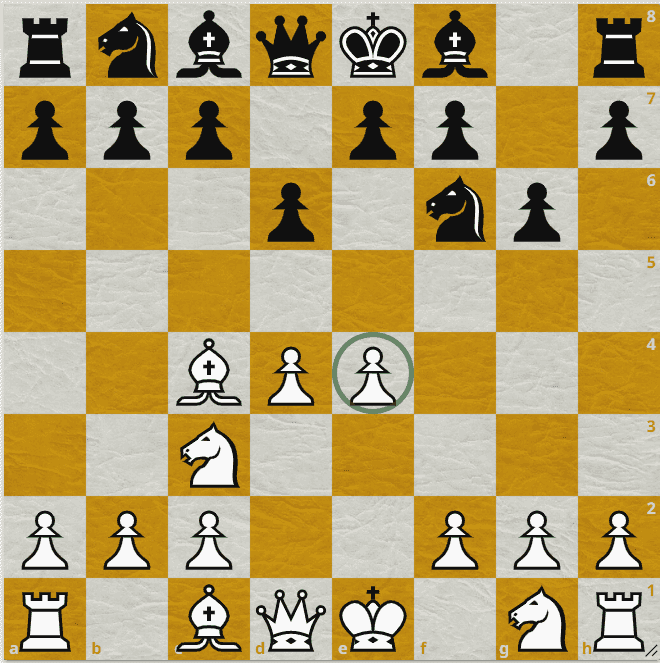
My opponent played 4... Nxe4, taking the highlighted pawn. If this were a faster game, I would have snap taken back with 5. Nxe4. It looks like black just blundered his knight, but he has the funny fork 5... d5, taking either my knight or my bishop. After 5. Bxd5 Qxd5, the game would have landed in the following position:
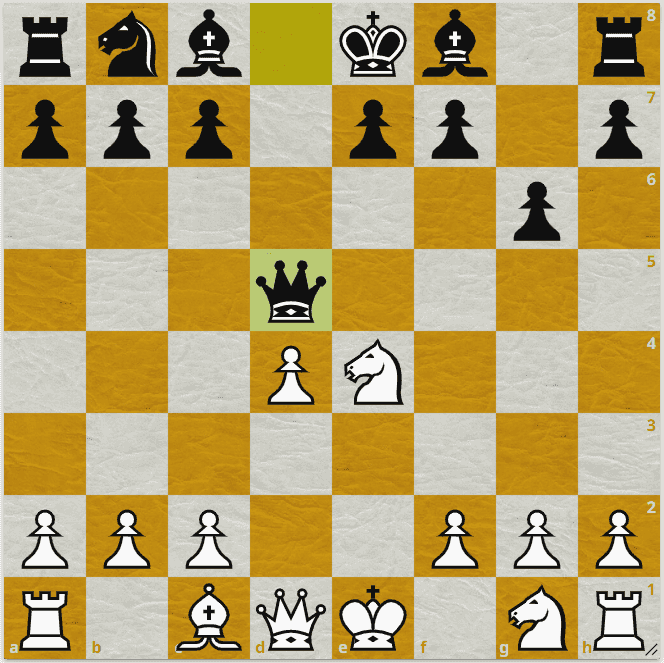
The material has evened out, and according to Stockfish, the game is basically even.
However, I realized a much better move for white, instead of 5. Nxe4. Can you see it? Continue on when you are ready.
The better move is 5. Bxf7!!.
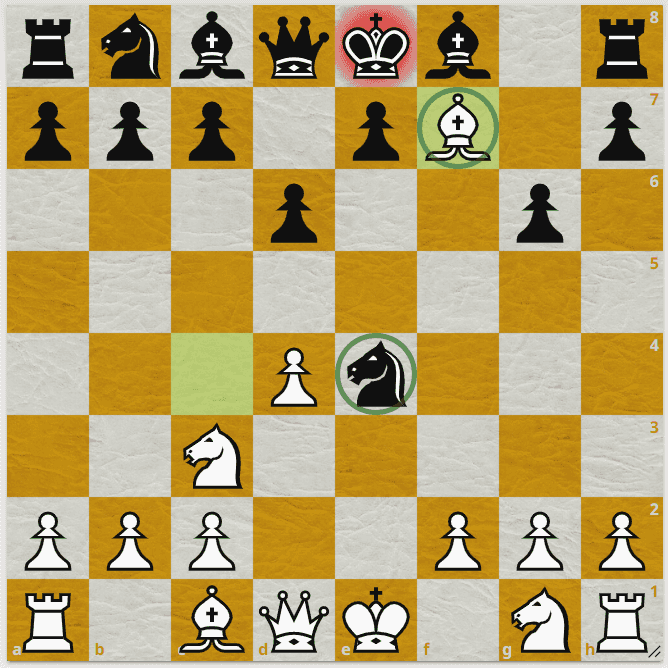
Black will naturally take back with 5... Kxf7. Since the bishop is out of the picture, I can now take the knight back without getting forked, 6. Nxe4. At very worst, this nets me white a pawn and places white ahead in terms of development. But it's even better than that because black's king is now exposed and can no longer castle.
From 5... Kxf7, the game continued with 6. Nxe4 d5 7. Qf3+ Bf5 (pinning the bishop, almost never a good move) 8. Ng5+ Kg7.
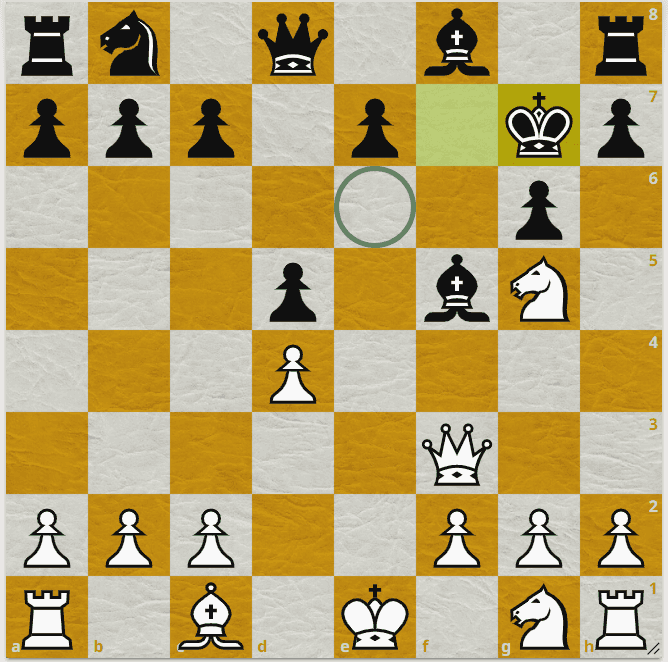
In the previous move, black should have retreated his king, according to stockfish. By moving his king to g7, he places his king and queen in range for my knight to fork them on the highlighted square. How should white take advantage of this? Scroll down when ready.
I can't immediately fork the queen and king with 9. Ne6+, since black's light-squared bishop would just take it. First, I needed to get rid of black's light-squared bishop, and since I could potentially win a queen after I did so, I was willing to use any piece necessary to take it. I played 9. Qxf5!, temporarily sacrificing my queen, but freeing up the e6 square for my knight.
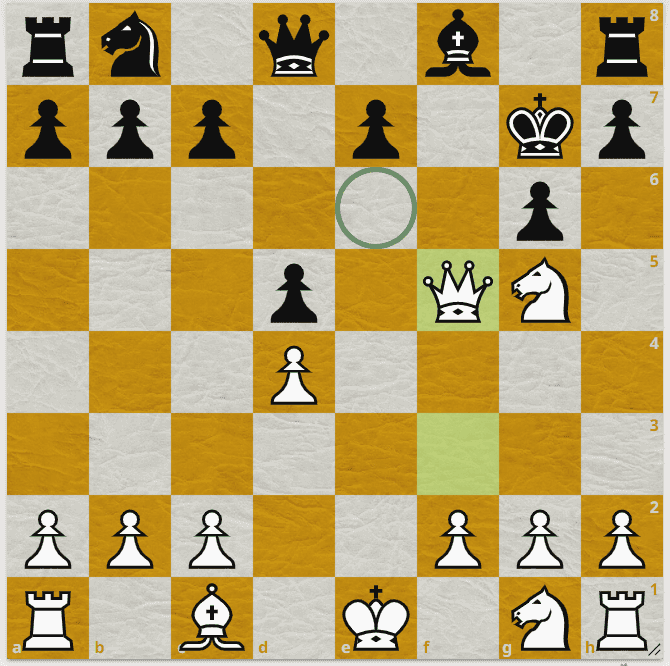
After 9. Qxf5, the game continued 9... gxf5 10. Ne6+ Kf7 11. Nxd6+ Ke8 12. Nxb7.
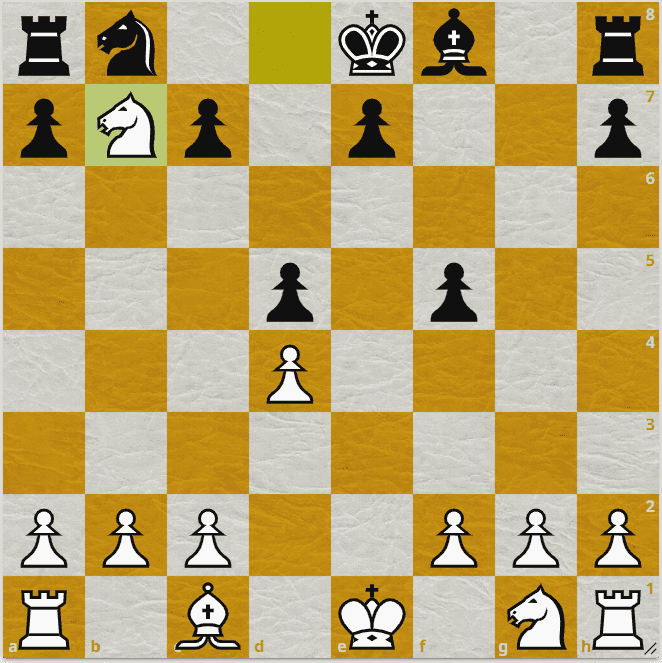
At this point, I was up a minor piece and two pawns. The rest of the game wasn't very eventful, and I ended up winning it without much trouble. The rest of the game can be found here But I was happy to solve these two tactical puzzles, and wanted to share them.
P.S. I did find a really crazy engine line at the end of the game (which unfortunately I can not reproduce now -- apologies for the lack of diagram). In this line, white ended up with two knights and black ended up with one rook pawn on the h file. It's well-known that two knights can not mate a lone king. Somehow, however, the engine found a white to trap the black king in the h1 corner, then force black's h-pawn to advance until it trapped the black king, and finally checkmate the black king. I didn't know that that was even possible: white checkmated using two knights and black's own pawn!